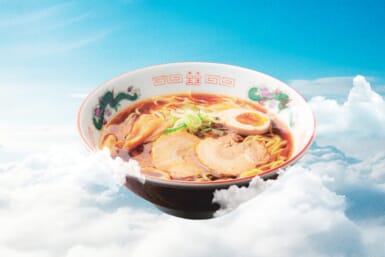Grant van der Vijver goes camping in Kamogawa, Chiba
Paradise usually comes with a price and so it was not without some trepidation that I strained out the car window to see down the winding road that led to our campsite. As we descended into the wooded area the daily world of asphalt, noise, and advertising signs gave way to a lush green panorama that blended the peaceful whispering of forested hills with the fresh air of the nearby sea.
“Camping Hills Kamogawa” the sign announced, and before I’d finished deciphering the katakana, the owners’ dog was at our car door eagerly awaiting the new arrivals. It’s a family run campsite and checking in was easy and friendly. Nestled against the slope of one of several hills, the site fits neatly into a mountainous realm where trees and people share the space in silence. Like the surrounding rice farms, the camp also uses terraces to maximize the surface area. The location is 200 meters above sea level and our selected space was in the upper half of the venue which afforded us beautiful views of the flora and the irregularly shaped tambo (rice fields), as well as a fragment of the ocean where the east coast of Chiba dips into the Pacific. I’d not expected to find anything as beautiful and was immediately drawn into the scenery, particularly the terraced fields which quickly conjured up exotic images of Bali and Vietnam. Six years in Japan and this was my first time to see her tranquil hills layered with shallow pools of rice. How easy it is to forget that the ordinary can be extraordinary, I thought.
Despite a bit of wind on the first day, setting up our tents went quite smoothly. Unlike some camp experiences I’ve had, no mammoth-sized boulders needed shifting, no ground needed leveling, or tent-peg-bending stones unearthing! Each site is covered by grass (more green!) and the firm clay beneath is soft enough to sleep in comfort but firm enough to ensure that you wake up with your tent where you left it. A brief sortie around the site quickly allayed the other camp fears I was harboring about the location. I have never been that enthusiastic about camping but the more I saw, the better I felt. Ablution facilities are very well kept, and there are two communal areas equipped with running hot water for preparing meals and cleaning pots and pans. Sites are also equipped with electrical points for your lights and stoves. Two traditional rotemburo, or outside baths, infused with herbal fragrances, add to the outdoor experience. From the comfort of these stone and wood structures one can enjoy a view of the mountains and trees while still maintaining the sense of privacy that is needed to relax. The campsite is circumscribed by the surrounding forest and not terribly big, which is good for parents who want their kids to wander off safely but not stray too far. It blends in unobtrusively with the neighbouring private properties and only the irregularly shaped tambo and occasional house in the distance break the illusion of a wild and continuous landscape.
Seasoned campers, my friends and hosts, Kazu and Chiharu were so well organized that there was very little for me to do beyond opening this jar or passing that plate, so I devoted myself to the art of basically doing nothing— which I occasionally interrupted to do some bird watching, amateur photography, and feast on Kazu’s gourmet creations. Pets are welcome, and their Labrador Azuki was very popular with the camping kids who in turn led us on adventures of frog hunting and butterfly catching. On the ground, neat little rows of rice plants stood in contrast to the wild and forested hills. High above us planes bound for Narita passed over in pale silvery silence, unaware of the weathered seniors working almost from sunrise to sunset planting kome on the terraces.
The campsite is about twenty minutes from the sea and the surrounding area holds many attractions for those who’d like to get out and about. Futomi beach is the most accessible and great for families as it has a clean sandy shore and rock pools begging to be explored. Around the corner is a fishing port where all manner of local seafood can be had and, if you know what to look for, you can even gather your own seaweed for miso soup like the locals do. To the north on Route 128, Kamogawa Sea World is also a short trip away as is the more popular surf attraction of Kamogawa beach. Farm stalls and co-ops abound in the area and one can pick up fruit, vegetables, flowers, and all manner of things very cheaply. There is also the huge shopping center Bresia on the town side of the hill which is guaranteed to have whatever you forgot to bring on your trip. If you come down from Tokyo take the R128. We approached from Kanagawa and took a ferry across the bay from Yokosuka (30 minutes). This option takes you past the beautiful O Yama Sen Mai Da (Big Mountain with A Thousand Rice Fields) and really is worth the ten-minute diversion. It boasts a spectacular view, a renowned ceramics store, and occasionally a fire festival at night during which the mountainside is lit up with bamboo torches placed along the tambo.
So, if you think you can manage waking up to the sounds of birds chirping, relaxing in a sea of green, and slipping into an easy rhythm with Mother Nature, then Camping Hills Kamogawa is worth the trip. As to the cost of paradise—the staff can be reached on 04-7092-9979.








